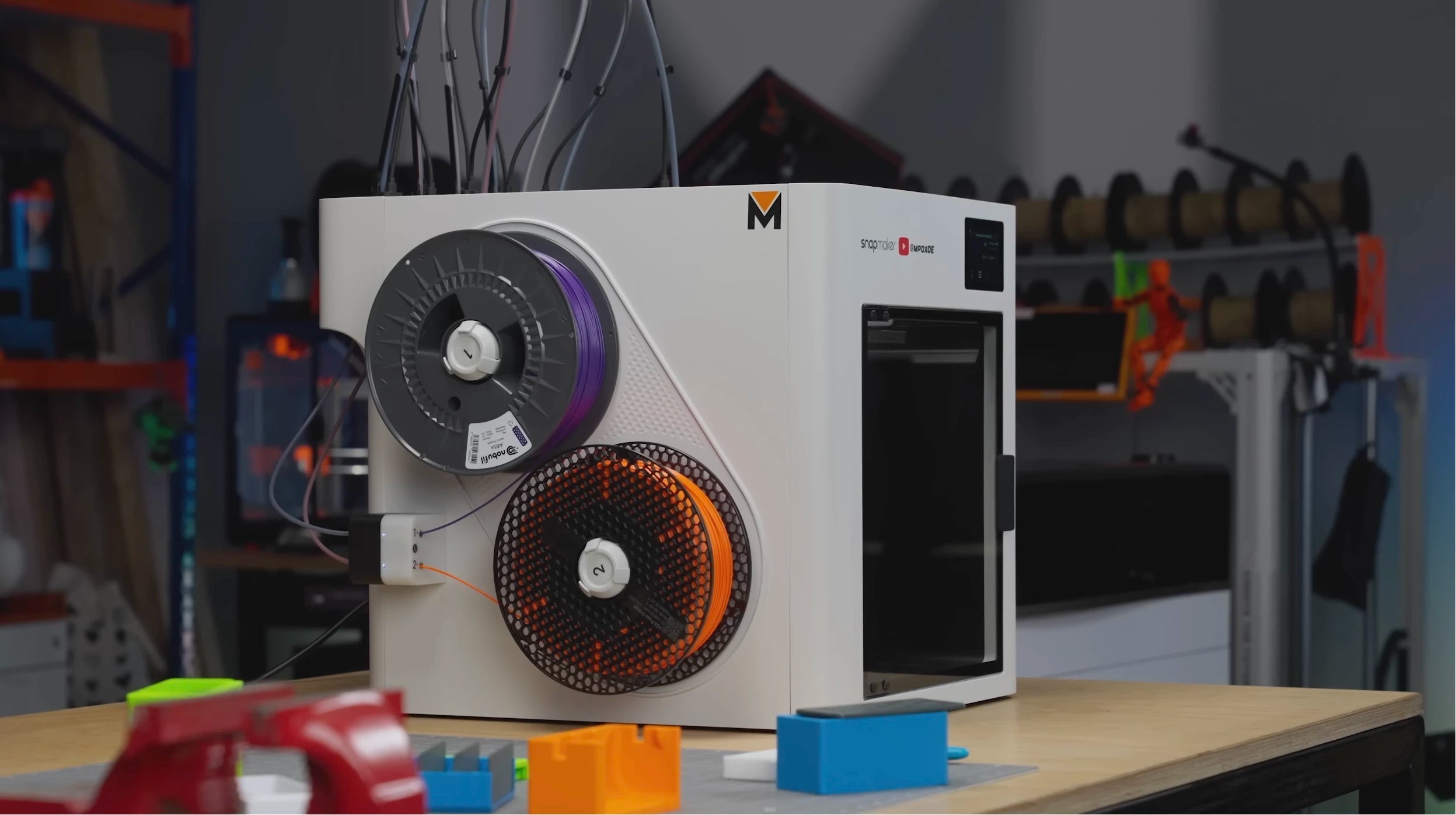Kate G. - July 28st, 2025
Phaetus DXC Extruder Review: A Game-Changer for Direct Drive Systems?

The Phaetus DXC Extruder has been making waves in the 3D printing community as a high-performance, budget-friendly upgrade for direct drive setups. Designed to address common extrusion issues like filament grinding and gear wear, this dual-gear extruder brings several innovative features to the table.
Key Features & Innovations
1. Dual-Gear Design with Anti-Slip Performance
The DXC uses two hardened steel gears (one driven, one idler) to grip filament more effectively than single-gear systems. Unlike cheaper extruders that suffer from filament slippage under high retraction speeds, the DXC’s angled gear teeth mesh smoothly with a U-shaped wheel, ensuring consistent feeding—even with flexible filaments like TPU.

2. Adaptive Pressure Rocking Arm
Many extruders struggle with uneven pressure on the filament, leading to grinding or inconsistent extrusion. The DXC’s spring-loaded rocking arm automatically adjusts tension based on filament thickness, reducing the risk of crushing soft materials or under-extruding rigid ones.

3. RNC® Ultra-Wear-Resistant Coating (Patented)
Phaetus’s proprietary RNC coating on the gears significantly extends lifespan compared to standard steel gears. In stress tests, it showed minimal wear even after 500+ hours of abrasive filaments like carbon-fiber-filled PLA.

4. Open Cooling
ArchitectureOverheating is a common issue in compact direct-drive setups. The DXC’s open-frame design improves airflow around the motor and gears, preventing heat buildup during long prints.

5. Smart Filament Sensor
PlacementThe sensor is integrated into the extruder body, reducing wiring clutter and improving reliability compared to external Bowden-mounted sensors.

Real-World Testing: How Does It Compare?
vs. Cyclops Extruder Easier
●Assembly: The DXC uses a modular design with pre-aligned gears, eliminating the fussy adjustments needed for Cyclops.
●More Affordable: At ~$40, it’s 20–30% cheaper than similar dual-gear competitors.
●Better Filament Compatibility: Handles flexibles and abrasive materials more reliably.

Upgrading a Creality K1
Many K1 users report issues with the stock extruder:
Plastic Gears: Prone to wear, especially with abrasive filaments.
Plastic Housing: Can warp under heat, causing misalignment.
Bearing Play: Leads to inconsistent extrusion and artifacts like zits/blobs.

The DXC Fixes These Problems:
The DXC Fixes These Problems:
✅ All-Metal Construction: No plastic parts to wear or deform.
✅ Precision Bearings: Eliminates wobble for smoother extrusion.
✅ Drop-in Compatibility: Fits the K1 with minimal modification (just a firmware tweak to adjust E-steps).

User Feedback from K1 Owners:
"Night and day difference! My K1 used to grind PETG after a week. With the DXC, it’s been months without issues." – Reddit user /u/K1Upgrader"
Finally, an extruder that doesn’t turn my filament into dust." – Facebook 3D Printing Group
Pros & Cons
Pros:
✔ Excellent grip, even on slippery/flexible filaments
✔ Durable RNC-coated gears outperform standard steel
✔ Cooler running than enclosed extruders
✔ Simple installation (great for beginners)
Cons:
❌ Not compatible with all printers (check mounting specs first)
❌ Sensor wiring could be longer for some setups
Final Verdict
The Phaetus DXC is a worthy upgrade for anyone struggling with extrusion consistency—especially Creality K1 owners. Its dual-gear design, adaptive tensioning, and rugged coating solve the most common direct-drive pain points, all at a reasonable price.
Rating: 9/10 (Loses a point for limited compatibility info.)
Who Should Buy It?
●K1 users tired of replacing plastic gears
●Budget-minded makers needing reliable dual-gear performance
●Anyone printing abrasive or flexible filaments
Alternatives:
●Bondtech LGX: Better for ultra-high-speed printing, but 3× the price.
●Creality Spider: Cheaper, but lacks the DXC’s durability.
Have you tried the DXC? Share your experience in the comments! 🚀



